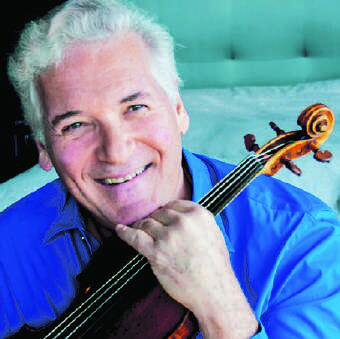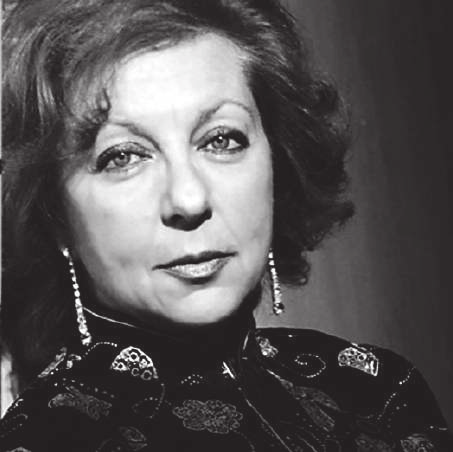NYMF finale with violin and piano
04.02.2022 Arts & CultureThe 16th Gstaad New Year Music Festival was all about singing. Nine of the twelve concerts were dedicated to the most original of all instruments. Unfortunately, two concerts had to be cancelled due to the pandemic. And, the final concert with violinist Pinchas Zukerman and pianist Olga Sitkovetsky required some talent for improvisation.
Duo instead of trio
The experienced musicians Zukerman and Sitkovetsky were undoubtedly suited to conclude this year’s festival with an afternoon concert in the church of Saanen, although many things had been planned differently. The two had been scheduled for Tuesday evening together with cellist Amanda Forsyth, Pinchas Zukerman’s wife. However, the tiny pest that has been making life difficult for us time and again for the past two years took no notice of the programming. Amanda Forsyth could not perform at all, and Zukerman and Sitkovetsky were not allowed to go on stage until the following Saturday. Consequently, the pieces with cello by Glière, Saint-Saëns and Beethoven had to be substituted.
Making music among friends
It was not only the programme and the instrumentation that were different but also the concert procedure. Zukerman felt entirely at home in the Saanen church. For the audience it must have felt like attending a private musical soirée. The world-famous violinist was in the church before the concert began, having a chat here and there, playing briefly every now and then, or entertaining enthusiastic elderly ladies with charm and humour. At some point, the dimming of the lights signalled that the concert could begin, at which point Zukerman leisurely strolled onto the stage and started playing.
Sitkovetsky and Zukerman opened with a Mozart sonata. It was clear from the start that musically, Olga Sitkovetsky’s reserved, discreet manner did in no way fall short of the famous violinist. On the contrary, the pianist excelled with mature, finely balanced interpretations and precise technique, especially in Brahms’ Scherzo of the FAE Sonata (Frei aber einsam/Free but Lonely).
In the 1850s, Robert Schumann had the idea of dedicating a sonata to the then famous violinist Joseph Joachim, which was written by various composers. The first movement (Allegro) was written by Albert Dietrich, a pupil of Schumann. Schumann composed the second and fourth movements (Intermezzo, Finale) himself, leaving the third movement (Scherzo) to the young Brahms. The motto, “Free but lonely”, corresponded to the motto of the violinist Joachim at the time. Allegedly, he easily recognised who had composed each movement.
Spring, Sicilienne and conclusion
Beethoven’s so-called Spring Sonata is probably one of the most frequently performed works for piano and violin. Yes, exactly, for piano and violin, not violin and piano, as Zukerman pointed out in his whimsical address. So, mighty Beethoven forced the famous, extroverted solo star violinist to play second fiddle, so to speak, and the incredibly accomplished, deserving “accompanist”, highly esteemed by countless string players, took the lead – what amusing, tongue-in-cheek irony.
In the Sicilienne by Maria Theresia von Paradis, the distribution of roles was traditional again, with Pinchas Zukerman perhaps even having his highlight of the concert. The surprisingly numerous audience thanked him with full applause.
BASED ON AVS/ÇETIN KÖKSAL





